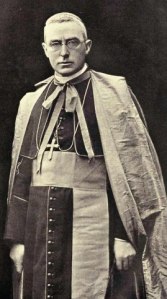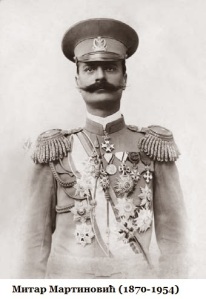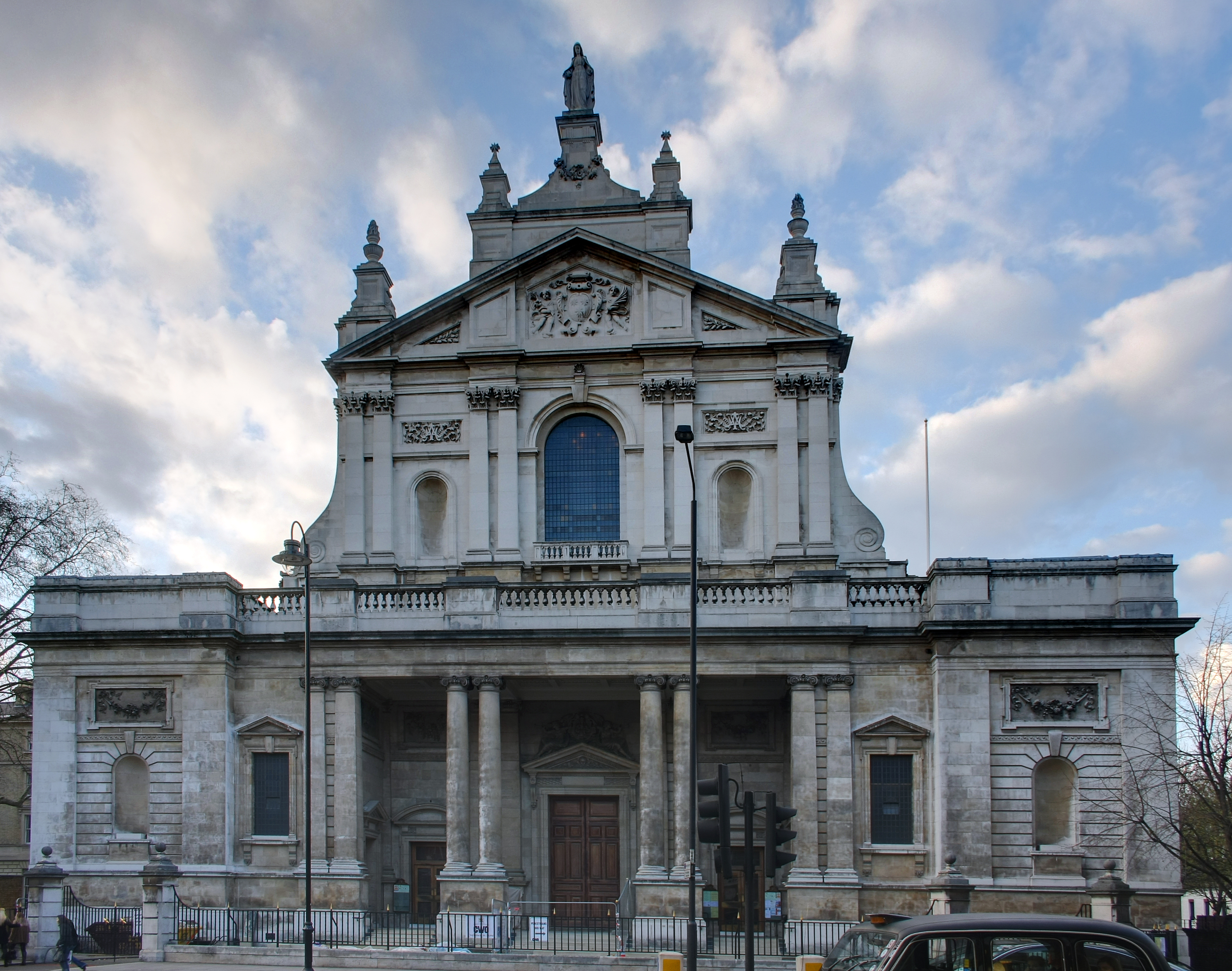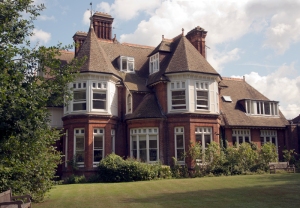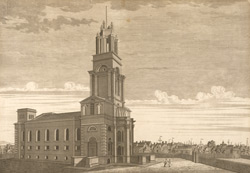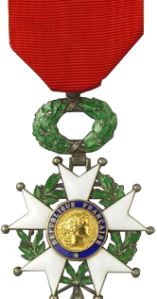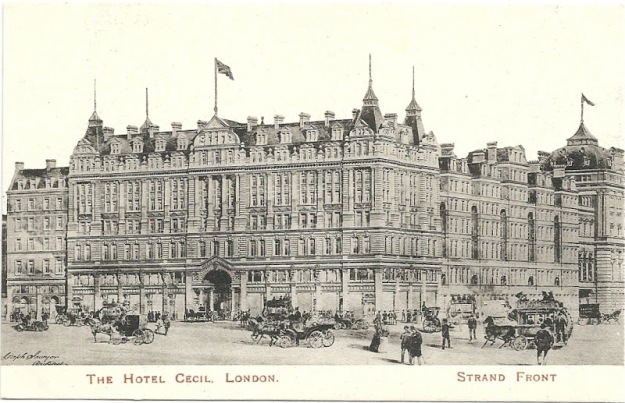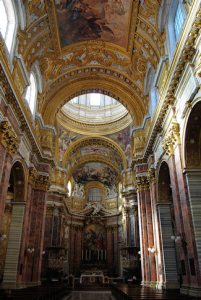This wedding has been confusing me for some time. There are some members of the family there. Notably, Uncle Alfred O’Bryen, and, inevitably, the Roper Parkingtons, whose granddaughter marries Alfred’s nephew twenty six years later. I’m also pretty confident that Miss Bullen is Aunt Florence who marries Uncle Rex who is Alfred’s youngest brother. But I find the connections, or rather the lack of connections baffling at the moment.
The Leeming family are extremely wealthy Lancashire corn merchants, and are old recusant Catholics, and have married members of the Brettargh, and Whiteside families at various points. The bride’s family appear to be Londoners. Mary Clare’s mother was a Rees, and she was born in London, as was her father. Her paternal grandfather was from Lancaster. The first few guests mentioned after the bride’s mother, and brothers are likely to be uncles and aunts. Mrs Dolan is the bride’s aunt, and Mr Behan is John Henry Behan, who is her first cousin, and he was born in Dublin. But the wedding seems to be northern boy marries London girl. There’s an eleven year age gap, but that’s fairly common at the time.
We’ll do the wedding next, and speculate at the end.
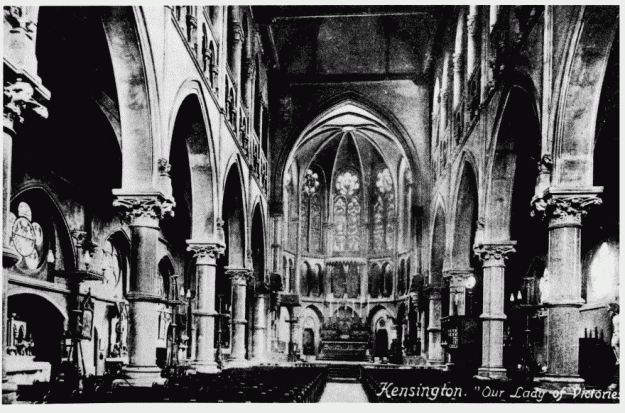
On the 15th inst., at the Pro-Cathedral, Kensington, by the Rev. W. H. Leeming (brother of the bridegroom), assisted by the Rev. Gilbert Dolan, O.S.B. (cousin of the bride), and the Rev. Father Fanning (Administrator, Pro-Cathedral), MR. JOHN LEEMING, second son of the late Richard Leeming, of Greaves House, Lancaster, and Lent-worth Hall, Wyresdale, was married to MARY CLARE, daughter of the late Dr. Hewitt, of Holland-road, Kensington, and of Mrs. Hewitt, of 16, Argyll Mansions. The bride, who was given away by her brother, was attired in a gown of rich white satin trimmed with old Irish Point (the gift of her cousin), and wore a handsome diamond star (the gift of the bridegroom), her bouquet being composed of lilies of the valley. The bridesmaids were Miss Rose Roskell, Miss M. Kendall, Miss Bullen, and Miss F. Leeming, who wore dresses of mauve crepe trimmed with white chiffon and ivory straw hats trimmed with orchids and white plumes ; they carried bouquets of white lilac and mauve orchids which with their bar-brooches of rubies and diamonds were the gift of the bridegroom. The bride was also attended by her little cousin, Miss Elaine Rees, picturesquely attired in white. The best man was Mr. J. W. Leeming. After the nuptial Mass, which was celebrated by the Rev. Gilbert Dolan, O.S.B., Father Leeming announced that he had received from Rome the Holy Father’s blessing for the bride and bride-groom. A reception was held at the Royal Palace Hotel, Kensington, and later in the afternoon Mr. and Mrs. Leeming left for Dover en route for the Riviera. The bride’s travelling dress was of grey cloth trimmed with white satin, and she wore a black hat with pink roses and white bird of paradise.

Among the presents were: Mrs. Hewitt, dinner service, dessert service, and old Derby tea service; Mr. J. C. Hewitt, cheque ; Mr. E. Hewitt, cheque ; Mr. Rees, diamond and pearl watch and bow ; Mrs. Rees, embossed silver sugar bowl and sifter ; Mrs. Dolan, handkerchief of Irish Point ; Mrs. Kelleher, old Irish Point lace, old silver teaspoons, and two large spoons in case ; Mr. Behan, antique silver bowl ; Mr. and Mrs. W. Mahoney, diamond and sapphire bracelet ; Mr. and Mrs. Hasslacher, dessert knives and forks ; Mrs. Charles Hasslacher, silver teaspoons ; Mrs. Schiller, silver brushes ; Mr. A. O’Bryen, silver fish carvers ; Major and Mrs. Roper Parkington, cut glass and silver claret jug ; Mrs. Charles Leeming, silver bacon dish ; Miss Mason, champagne bottle holder ; the Misses Roskell and Kendall, fan and silver buttonhook, etc.; Mr. and Mrs. Brettargh Leeming, silver toilet set in case ; the Misses Leeming, case of silver repousse fruit dishes, spoons, sugar basin and sifter, and grape scissors ; the Rev. W. H. Leeming, silver fish knives and forks ; Mr. J. W. Leeming, pair of Worcester candelabra ; Mr. William Leeming, silver tea and coffee service ; Mrs. Coffin, Crown Derby afternoon tea set, tray, and silver spoons ; Mrs. Robinson, silver paper knife and book- marker ; the Very Rev. Dean Brettargh, silver lemon-squeezer ; Mr. and Miss Hatch, horn and silver candlesticks ; the Very Rev. Dean Billington, Picturesque Mediterranean, three volumes ; Miss Coulston, antique silver sugar-basin and sifter ; Mr. and Mrs. Gibson, pair of bronze and brass candesticks ; Mr. and Mrs. H. J. Knowles, four silver bonbon dishes ; Mr. and Mrs. R. Preston, case of silver salt-cellars ; the Rev. W. Wickwar, cut-glass and silver celery-glass ; the Rev. J. Roche, case of silver spoons ; Mr. J. Pyke, silver and cut-glass lamp ; Mr. T. J. Walmsley, silver and cut-glass lamp ; Mr. J. F. Warrington, engraving after Erskine Nicol; Mr. Charles Broadbent, silver cigarette-case ; Miss C. Hall, two silver napkin rings ; Mr. and Mrs. F. Batt, two silver and cut-glass scent bottles ; indoor and outdoor servants at Greaves House, silver salver ; tenants and workmen at Lentworth Hall Estate, silver cake-basket ; keeper’s wife and servants at Lentworth Hall, silver and ivory cake knife ; tenants, Out-Raw-cliffe Estate, gold-mounted walking-stick.
The above text was found on p.26,19th February 1898, in “The Tablet: The International Catholic News Weekly.” Reproduced with kind permission of the Publisher. The Tablet can be found at http://www.thetablet.co.uk .
The Leeming family are Lancashire corn merchants, and are old recusant Catholics, and have married members of the Brettargh, and Whiteside families at various points, they are also related to the Gillow family,the famous Lancaster furniture makers who made furniture for Queen Victoria, amongst others. Richard Leeming, John’s father had bought Greaves House, in Lancaster for £11,000, in March 1874 . It’s not entirely when he acquired Lentworth Hall, and the Out-Rawcliffe Estate.
Richard Leeming died in 1888, leaving his properties in the hands of Trustees (his brother William, and three sons Richard, John, and James Whiteside Leeming. Slightly oddly, the trustees didn’t include Father William Leeming), and a great deal of money [almost £ 250,000]. His will allowed the Trustees to sell Greaves House – after the death of his widow Eliza – on the condition that two or more unmarried daughters would be permitted to live there rent-free if they wished. In January 1937 Mary Eliza died leaving her last sister Mary Frances Leeming no longer legally permitted to live in the house. It seems faintly harsh as she had lived in the house from the age of five until she was sixty three, but she was independently wealthy and ended up in Warton near Carnforth. So still close to home.
There are a large number of the extended Leeming family at the wedding, including “the Misses Leeming,” who were the groom’s four unmarried sisters, who were still living in Lancaster. “The Rev. W. H. Leeming, Mr. J. W. Leeming, and Mr. and Mrs. (Richard) Brettargh Leeming,” brothers, and a sister in law, of the groom. A pair of uncles – “Mr. William Leeming, and the Very Rev. Dean Brettargh,”.
There’s a mixture of the great, and the good from Lancashire. Mr Preston was Mayor of Lancaster four times between 1894 and 1911, and was also at Alfred O’Bryen’s wedding in 1901. “Mr. J. Pyke, ” is Joseph Pyke, of Preston, who was another corn merchant, and was also Alfred O’Bryen’s best man. He went to school with “Mr. T. J. Walmsley, and Mr. J. F. Warrington,” at Ushaw in county Durham. The bride’s brother “Mr. E. Hewitt,” Edmund Hewitt was also at Ushaw. They all overlapped one way or another with Fr. Philip O’Bryen who was also there, and I rather suspect Alfred O’Bryen was at Ushaw, like Philip who was three years younger; and that their two youngest brothers (Ernest, and Rex) were rather different in attending Stonyhurst. It would help explain why Alfred was a guest at this wedding, and why various of the guests at this wedding were at his two years later.
But I am completely baffled by why “Mr. and Mrs. Hasslacher, and (Mr?) and Mrs. Charles Hasslacher,” and “Major and Mrs. Roper Parkington” [ It was before his knighthood in 1902] were all there. The Hasslachers were all wine shippers at James Hasslacher & co. Charles Hasslacher took on the firm after his father James’ death in 1903. John Roper Parkington was a friend of the Hasslachers, and they were guests at his silver wedding later in 1898.
It could be a Kensington connection; The Hasslachers were living at 65 Holland Park, and the Hewitts were about three quarters of a mile away in Holland Road. But I still can’t get the Roper Parkington connection.



